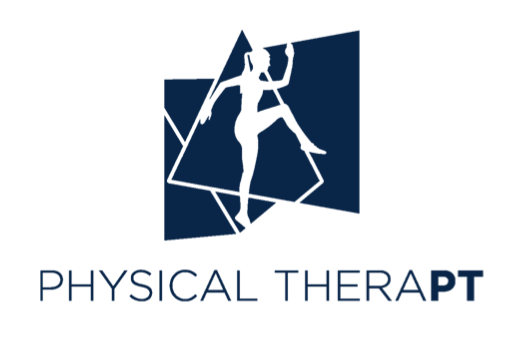Ever watch your star player go down with a knee injury, see a shoulder pop out during a tackle, or witness an ankle roll on the court? These moments are gut-wrenching for athletes, parents, and coaches alike. But here's the good news: most high school athletes can successfully return to their sport after these common injuries — if they follow the right roadmap for physical recovery.
Let's break down what it takes to get physically cleared for return to play after an ACL tear, shoulder dislocation, or ankle sprain.
The ACL Injury: A Marathon, Not a Sprint
An ACL tear is one of the most feared injuries in youth sports, and for good reason. Nearly a quarter of a million ACL injuries occur annually in the US and Canada, with rates in high school athletes reaching 5.5 per 100,000 athlete exposures. But here's what many don't realize: getting back on the field isn't just about healing — it's about meeting specific physical benchmarks.
The minimum timeline is 9 months from surgery, and that's not arbitrary. Your body needs time for the graft to incorporate biologically, and rushing back increases reinjury risk dramatically. In fact, athletes who returned before 9 months had significantly higher rates of reinjury compared to those who waited.
But time alone isn't enough. Athletes must achieve at least 90% limb symmetry index (LSI) for both quadriceps strength and hop testing before getting cleared for competition. This means the injured leg needs to perform at 90% or better compared to the uninjured leg. Athletes who met these criteria had a reinjury rate of just 4.5% within 2 years, compared to 33% in those who didn't meet the criteria.
The recovery follows a structured, mulit-phase approach:
Early phase (weeks 0-6): Focus on reducing swelling, restoring range of motion to 0-115 degrees, and achieving 60% quadriceps strength symmetry
Intermediate phase (weeks 7-9): Progress to 70% strength symmetry with full, symmetrical range of motion
Late phase (weeks 10-16): Reach 75-80% strength symmetry and begin running when you hit 80% and can demonstrate single leg squats, step downs and hops with good mechanics
Transitional phase (months 4-6): Introduce jumping, sprinting, and agility drills at 85% strength symmetry
Return-to-sport phase (months 6-12): Sport-specific training with final clearance requiring 90% symmetry, no pain or swelling, and adequate confidence levels
Here's the reality check: only 40-55% of athletes return to their pre-injury activity level after ACL reconstruction. Even among highly motivated European professional soccer players with excellent resources, only 65% returned to their previous level. This isn't meant to discourage — it's meant to emphasize the importance of working with a sports physical therapist and following a comprehensive plan.
Shoulder Dislocations: High Risk, But Quick Recovery Possible
The shoulder is the most commonly dislocated joint in the body, and it usually dislocates anteriorly (toward the front). For high school athletes, especially those in contact and collision sports, this injury comes with a sobering statistic: recurrence rates can reach up to 90% in active patients younger than 25 years.
But here's where shoulder dislocations differ from ACL injuries: return to play can happen as early as 2-3 weeks after injury for athletes who are pain-free, have symmetrical shoulder range of motion, and can perform sport-specific motions. Some athletes with recurrent dislocations who experience easy relocation, minimal pain, full range of motion, and protective strength may even return the same day.
The treatment approach depends on several factors:
Immediate management:
Attempted relocation on the field before muscle spasm develops
Neurovascular assessment before and after reduction
Immobilization and pain management after successful reduction
Post-reduction radiographs after first-time dislocation
Recovery protocol:
Sling use for 2-4 weeks for comfort (though current evidence doesn't mandate a specific duration)
Graduated rehabilitation focusing on passive and active range of motion
Physical therapy addressing joint range of motion, scapular control, rotator cuff strength, and sport-specific conditioning
Surgical considerations: Surgery should be considered for first-time dislocations in active patients under 25 due to the extremely high recurrence rate, or when there are complications like large bony defects.
Interestingly, research on high school athletes shows that 85% of those treated nonoperatively successfully returned to their sport and completed at least one full season without additional injury. Athletes with subluxations (partial dislocations) fared even better, with an 89% success rate compared to 26% for complete dislocations.
Ankle Sprains: The Most Common Culprit
Ankle sprains are the most common foot-ankle and sports-related injury for which people seek medical care. Four in every 10 first-time ankle sprains occur during sports participation. The good news? Most athletes bounce back quickly.!
High school athletes have a 75% chance of returning to sport within 3 days after a first-time , Grade I ankle sprain, and a 95% chance within 10 days. In college athletics, 44.4% of athletes returned to play in less than 24 hours. However, more severe Grade II and III sprains involving multiple ligaments can sideline athletes for more than 3 weeks.
The key to successful return involves addressing five critical domains — the PAASS framework:
Pain: Both during sport participation and over the last 24 hours
Ankle impairments: Range of motion, muscle strength, endurance, and power
Athlete perception: Confidence, reassurance, stability, and psychological readiness
Sensorimotor control: Proprioception and dynamic postural control/balance
Sport/functional performance: Hopping, jumping, agility, sport-specific drills, and ability to complete a full training session
Supervised exercise programs addressing strength, coordination, proprioception, and functional deficits lead to faster return to sports. Evidence also supports the use of compression stockings and anteroposterior ankle joint mobilization for quicker recovery.
General return-to-work and sport guidelines suggest:
Return to sedentary work: 2-6 weeks following injury
Return to physical occupations and sports: 6-8 weeks
These timelines should be adjusted based on injury severity, rehabilitation response, and specific task requirements. Working with a sports medicine clinician will be key for determining optimal readiness.
TOOLS FOR BUILDING CONFIDENCE
Resistance bands, balance pads and boards, and BFR cuffs are a few of the essential tools in rehabilitation. Resistance bands safely build strength, balance pads enhance coordination and stability, and BFR cuffs accelerate recovery through low-load training.
Below are our top 5 recommended products to use as a recovering athlete.
Click the image to shop on Amazon through our affiliate links and access possible discounts!
The Bottom Line
Physical clearance for return to play isn't one-size-fits-all. ACL injuries require the longest recovery with the most stringent criteria — minimum 9 months and 90% strength symmetry. Shoulder dislocations can allow quicker return (2-3 weeks) but carry high recurrence risk in young athletes. Ankle sprains typically resolve fastest, with most athletes back within days to weeks.
The common thread? Meeting objective physical criteria matters more than arbitrary timelines. Pain-free movement, symmetrical strength, full range of motion, and sport-specific performance capabilities aren't just checkboxes — they're your best insurance against reinjury.
In Part 2, we'll explore the mental side of return to play — because as we've learned, physical readiness is only half the battle.
References
Acute Knee Injuries in Children and Adolescents: A Review. MacDonald J, Rodenberg R, Sweeney E. JAMA Pediatrics. 2021;175(6):624-630. doi:10.1001/jamapediatrics.2020.6130.
Anterior Cruciate Ligament Tear. Musahl V, Karlsson J. The New England Journal of Medicine. 2019;380(24):2341-2348. doi:10.1056/NEJMcp1805931.
Recovery Stages After Anterior Crucuiate Ligament Reconstruction. Petterson SC, Buckmire MC, Giordano AO. Arthroscopy : The Journal of Arthroscopic & Related Surgery : Official Publication of the Arthroscopy Association of North America and the International Arthroscopy Association. 2025;41(11):4393-4395. doi:10.1016/j.arthro.2025.08.001.
American Academy of Orthopaedic Surgeons Appropriate Use Criteria: Case Study on Return to Play to Pre-Injury Level Following Anterior Cruciate Ligament Injury. Ma R, Hamilton K, Kane S, et al. The Journal of the American Academy of Orthopaedic Surgeons. 2025;33(13):e715-e723. doi:10.5435/JAAOS-D-24-01272.
Acute Shoulder Injuries in Adults. Lauren Meryl Simon MD MPH, Van Nguyen DO, Ngozi Margarete Ezinwa MD MPH American Academy of Family Physicians (2023)
Initial Assessment and Management of Select Musculoskeletal Injuries: A Team Physician Consensus Statement. Herring SA, Kibler WB, Putukian M, et al. Medicine and Science in Sports and Exercise. 2024;56(3):385-401. doi:10.1249/MSS.0000000000003324.
Return to Sport as an Outcome Measure for Shoulder Instability: Surprising Findings in Nonoperative Management in a High School Athlete Population. Shanley E, Thigpen C, Brooks J, et al. The American Journal of Sports Medicine. 2019;47(5):1062-1067. doi:10.1177/0363546519829765.
Ankle Sprains: The Journal of Orthopaedic and Sports Physical Therapy. 2021;51(4):161. doi:10.2519/jospt.2021.0504.
Ankle Stability and Movement Coordination Impairments: Lateral Ankle Ligament Sprains Revision 2021. Martin RL, Davenport TE, Fraser JJ, et al. The Journal of Orthopaedic and Sports Physical Therapy. 2021;51(4):CPG1-CPG80. doi:10.2519/jospt.2021.0302.
Return to Sport Decisions After an Acute Lateral Ankle Sprain Injury: Introducing the PAASS Framework-an International Multidisciplinary Consensus. Smith MD, Vicenzino B, Bahr R, et al. British Journal of Sports Medicine. 2021;55(22):1270-1276. doi:10.1136/bjsports-2021-104087.













